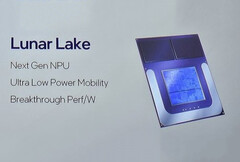Intel is planning to release a Meteor Lake successor in the form of Lunar Lake MX sometime in late 2024. From the info leaked back in November last year, it is understood that Lunar Lake will integrate a Xe2-LPG graphics accelerator that has similar performance to an Apple M1 iGPU at 12 W TDP, but it also has the potential to overtake an M2 GPU when pushed towards 30 W TDP. With the significantly higher processing power, the Xe2 iGPU will be able to handle additional image quality improvement techniques, such as an adaptive sharpening filter. This feature was recently revealed by Intel Linux engineer Nemesa Garg in a description included with a series of patches sent out for validation.
Many a times images are blurred or upscaled content is also not as crisp as original rendered image. Traditional sharpening techniques often apply a uniform level of enhancement across entire image, which sometimes result in over-sharpening of some areas and potential loss of natural details.
Intel has come up with Display Engine based adaptive sharpening filter with minimal power and performance impact. From LNL onwards, the Display hardware can use one of the pipe scaler for adaptive sharpness filter. This can be used for both gaming and non-gaming use cases like photos, image viewing. It works on a region of pixels depending on the tap size.
This RFC is an attempt to introduce an adaptive sharpness solution which helps in improving the image quality. For this new CRTC property is added. The user can set this property with desired sharpness strength value with 0-255. A value of 1 representing minimum sharpening strength and 255 representing maximum sharpness strength. A strength value of 0 means no sharpening or sharpening feature disabled. It works on a region of pixels depending on the tap size. The coefficients are used to generate an alpha value which is used to blend the sharpened image to original image.
Userspace implementation for sharpening feature and IGT implementation is in progress.
Phoronix reports that Nemesa Garg sent out five patches for the adaptive sharpening filter and these will undergo a review process in order to be included in the Linux 6.9 kernel version. There are other patches awaiting review, as well, including code that should bring CPU core performance benefits. Keeping in mind that Xe2-LPG is the low power version of the upcoming Battlemage architecture, we could see the adaptive sharpening filter included with future desktop GPUs.
Buy the Sparkle Intel Arc A770 Titan OC Edition GPU on Amazon
Source(s)
via Phoronix / Videocardz













